A Pollinator Lawn introduces a diversity of low-growing flowering plants into a typical lawn. This provides forage for pollinators, and the plants have deeper roots that need less watering. If you are not concerned with having a uniform carpet of green lawn in frequently-used areas, this may be the best option to help restore the ecological function of your yard.
Pollinator Lawn
What is a Pollinator Lawn?
Bee lawns are made of a tight mix of grasses and low-growing perennials that can be used and treated much like a regular lawn but also offer high-quality nutrition to pollinators.
Why should I plant a Pollinator Lawn?
Pollinator populations have been declining in part due to habitat loss, pesticide use, and parasitic mites. Pollinators play essential roles in our ecosystems and are responsible for one-third of the food on our plates! Introducing flowering plants into a lawn will help them. Besides this, you are also increasing your yard’s resilience; your yard will have healthier soil and need less fertilizing.
Where do you plant a Pollinator Lawn?
Turf areas that are not heavily used for recreational purposes or that are primarily aesthetic are great locations. Examples include boulevards, steep or challenging slopes, and right of ways or easements.
What plants are in a Pollinator Lawn?
Shorter flowers: These species represent flower types that attract bees of various sizes and nectar needs. These flowers are low-growing and tolerate mowing down to 3 inches.
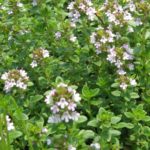 |
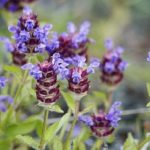 |
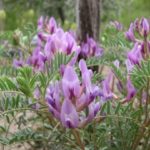 |
| Creeping thyme | Self heal | Ground plum |
Taller flowers: These bloom above typical mowing heights, but make nice additions to gardens or border areas.
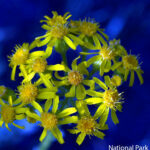 |
 |
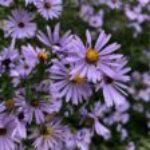 |
| Prairie Groundsel | Lanceleaf Coreopsis | Calico Aster |
Grasses: Mix in low-maintenance grasses that require less mowing and maintenance.
 |
| Fine fescues |
Some retailers offer pre-made pollinator lawn seed mixes. For additional turf alternative plant lists, check out our Resources page.
How do I plant a Pollinator Lawn?
Overseed a traditional lawn with pollinator friendly seeds
-
- Mow your lawn as short as you can — 1 inch or less. Rake or otherwise remove grass clippings to expose as much soil as possible.
- Aerating the lawn is recommended, but not required. It can be done with a shovel or machine. It helps improve seed-to-soil contact and creates good conditions for seed germination and healthy growth.
- Spread seed over the yard at appropriate seeding rates:
- White Clover at 1.1 ounces (2.5 tablespoons) / 1000 ft2
- Self heal at 1.2 ounces (2.5 tablespoons) / 1000 ft2
- Creeping thyme at .16 ounce (1 teaspoon) / 1000 ft2
- (Optional) Fine Fescue at 4 lbs / 1000 ft2
- You can mix these small amounts of seed into and apply with compost. Compost can be applied at a rate up to 40 lbs / 50 ft2 of lawn, and improves seed-to-soil contact and germination rates.
Build from the bottom up
- Start with a “blank slate” by removing existing grass. We don’t recommend most herbicides, due to their impact on water quality. Below are some alternatives:
- Sheet mulching uses cardboard to smother grass.
- A sod cutter is a non-chemical method that can cleanly remove grass and its roots—but is hard work, and you can lose a lot of organic matter.
- Solarization is a non-chemical method that covers the area with plastic and using the sun and lack of water to kill grass. This uses a lot of plastic, takes time, plastic degrades and may release toxins, and is not practical on a large scale”sod.
- For homeowners, 20% acetic acid or Phydura, a more natural herbicide, are more ecologically responsible alternatives to glyphosate. It kills all vegetation but leaves roots for stabilization and reseeds easily.
- Once you’ve removed or killed your previous grass, follow the directions above to (optionally) aerate your lawn and seed fine fescue and flowers at recommended rates.
How do I maintain a Pollinator Lawn?
-
- Watering – Water newly seeded lawns daily with a sprinkler for 5 minutes in the morning and early evening for the first 2 weeks, then reduce to every 2-3 days thereafter for the next month. Continue to monitor rainfall and the lawn and provide supplemental water if needed.
- Mowing – If you mow, keep it at least 3” tall. Taller lawns shade the ground, preventing too much moisture from evaporating while also discouraging weeds from sprouting. Also, holding off on mowing while flowers are blooming increases the amount of forage available for pollinators.
- Fertilizing – White clover fixes atmospheric nitrogen into the ground, reducing the need for fertilizer. Get your soil tested to know what nutrients are most lacking. Don’t forget that whatever chemicals your lawn doesn’t use up get washed into our water.
- Weeding – Most herbicides won’t be able to differentiate between the flowers you want to keep and those you want to remove. Hand tools are effective for weeding.

